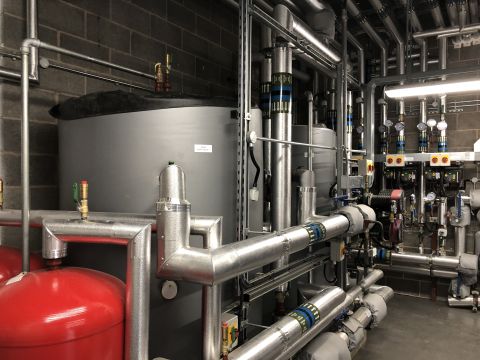Building Regulations in England & Parts L, F and O
With the transitional period now over, the updated 2022 Building Regulations Part L, Part F, and the new Part O, became legally enforceable for all new residential projects.
This is the biggest regulatory change the construction sector has seen in the last 40 years and a stepping stone in our transition away from fossil fuel systems toward decarbonised homes and the electrification of heat - and ultimately, the Future Homes Standard. This shift will impact the way we design buildings and specify technologies.
Have you decided which technologies to specify to achieve compliance for your next residential project?
The new English Building Regulations came into law on the 15th of June 2021. For projects with existing planning permission there is one year transitional arrangements period that applies on plot-by plot basis.
The updated Part L outlines the four compliance metrics for new developments: primary energy target, carbon emissions target, fabric energy efficiency target, and minimum standards for building fabric and building services.
The ventilation system choice under the updated Part F is linked to aritightness as we look to increase indoor air quality. New Part O offers modelling to help mitigate the risk of overheating in buildings.
We designed a simple guide to the changes to Part L and Part F, and the new Part O, and discuss what they may mean for your project.
Our range of HVAC solutions aim to provide future proof technologies to building projects over various sectors.
Request our presentation on Building Regulation changes that answer the most frequently asked questions.
Latest News
Our news section cover building regulations, what the changes to Part L, F, and the new Part of O entail, and what this means for HVAC specification.

Brrrrrr-acing for Winter
The shortest day and longest night of the year will fall on December 21st., marking the winter solstice and the start of the coldest of the seasons. While other definitions place the start of winter as December 1st, temperatures have been falling steadily since the summer and the solstice is a timely reminder that heating indoor spaces will only become tougher as we journey into the new year.

Lower Your Carbon Footprint With Our New Heating Collection
New for this winter, Dimplex has added to its popular collection of oil-free radiators with the new Eco Column range (ECR).
Ideal for rooms where supplementary heating is required during the cold winter months, such as conservatories, the oil-free collection provides instant heat at the touch of a button.

Heat pumps, heat networks and direct electric heating - should Government mandate where they are used?
During the recent Future Homes Standard consultation, Government showed their support for using heat pumps, heat networks and direct electric heating within future residential developments. But what is the best application for each of these solutions?











